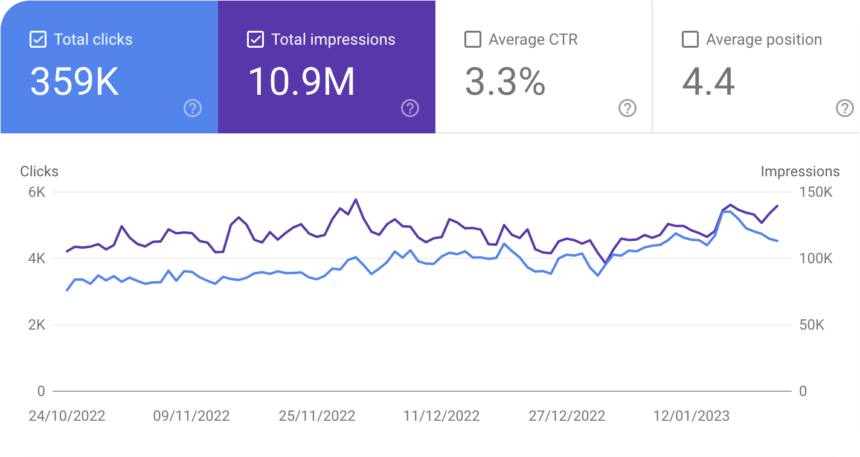In the digital world, content is king — but only if it’s done right. Whether you’re a beginner blogger, a seasoned content marketer, or a business owner trying to increase your online presence, the goal is the same: to generate traffic and clicks. However, with millions of blog posts published daily, not all content breaks through the noise.
This guide unpacks what truly constitutes high-quality content, how it helps generate organic traffic, and how to turn that traffic into valuable clicks that improve your earnings, brand authority, or engagement.
Understanding the Core: What Are Traffic and Clicks?
Before diving into strategies, it’s important to clarify the difference between traffic and clicks.
- Traffic refers to the number of users who visit your website.
- Clicks refer to the action users take when they interact with elements on your site, such as links, ads, or call-to-action buttons.
In the context of monetizing with Google AdSense, both are critical. You need visitors (traffic), but more importantly, you need them to engage (clicks). The more engaged your audience, the more likely they are to click on ads and affiliate links, improving your revenue.
Why High-Quality Content Matters for Traffic and Clicks
Creating content that merely fills up your blog space won’t get you far. Search engines have grown smarter and more intuitive. Google, for instance, prioritizes relevance, authority, and user satisfaction.
Here’s why quality content drives both traffic and clicks:
- It ranks higher on search engines, leading to more organic visitors.
- It keeps users engaged, lowering bounce rates and increasing session time.
- It builds trust, making users more likely to click on your recommendations or ads.
- It gets shared, earning you referral traffic from social platforms and other blogs.
Let’s break this down into actionable strategies to help you dominate with content.
Niche Down and Know Your Audience
The most successful bloggers and digital marketers understand their target audience inside out. Generic content won’t yield high traffic and clicks. Instead, you need to niche down and create laser-focused articles that solve specific problems.
How to Define Your Niche:
- Assess your passion and expertise. What can you write about consistently?
- Research demand. Use tools like Google Trends, Ubersuggest, or SEMrush to see if there’s consistent interest.
- Check competition. Too saturated? Try a micro-niche approach.
Once your niche is defined, identify your audience’s pain points, desires, and common questions. That’s the foundation of content that gets clicked.
Conduct Deep Keyword Research
Keywords are the bridge between user intent and your content. If you want more traffic and clicks, you need to optimize for search engines without compromising on readability.
Tools for Keyword Research:
- Google Keyword Planner
- Ahrefs
- SEMrush
- Ubersuggest
- AnswerThePublic
Pro Tip: Don’t just go for high-volume keywords. Look for:
- Long-tail keywords: These have lower competition and higher intent (e.g., “best vegan protein powder for women”).
- Question-based searches: These often lead to featured snippets and voice search results.
- Buyer-intent keywords: These convert better and generate more ad clicks.
Incorporate your keyword—“traffic and clicks”—naturally throughout your content, especially in:
- Title
- First 100 words
- Subheadings (H2, H3)
- Meta description
- Image alt texts
- URL slug
Craft Irresistible Headlines
The headline is the first impression. An engaging headline can be the difference between someone clicking on your article or scrolling past.
Elements of a Click-Worthy Title:
- Clarity: Tell readers exactly what they’ll get.
- Curiosity: Tease a benefit or surprise.
- Numbers: Lists and stats attract the eye (e.g., “10 Ways to Increase Blog Traffic”).
- Power Words: Words like “ultimate,” “free,” “secret,” and “proven” encourage clicks.
Compare these two:
- “Writing Good Content”
- “Mastering Content That Converts: How to Drive Traffic and Clicks with High-Quality Blog Posts”
Which one would you click?
Deliver Value in the First Few Lines
If your introduction doesn’t hook readers immediately, they’ll bounce. And when they leave early, Google sees that as a signal your content wasn’t helpful.
Make your intro:
- Empathetic: Relate to a common struggle.
- Informative: Set the tone for what’s to come.
- Actionable: Let them know they’ll leave with value.
Use formatting like bold, italics, bullet points, and short paragraphs to enhance readability. Remember, you’re writing for both humans and algorithms.
Use Visuals to Keep Attention and Increase Clicks
People are visual learners. Adding relevant images, infographics, charts, and videos increases engagement—and more engagement leads to more clicks.
Why visuals matter:
- Break up large blocks of text.
- Improve comprehension.
- Encourage social sharing.
- Support ad placement (especially for Google AdSense).
When using visuals:
- Optimize image size for fast loading.
- Use descriptive alt text with your target keyword (“traffic and clicks”).
- Include call-to-action graphics when promoting affiliate products or newsletters.
Structure Content for Skimmers
Most users don’t read blog posts word-for-word. They skim. Structuring your blog post well increases retention and, eventually, clicks.
Blog Structure Tips:
- Use H2 and H3 subheadings.
- Include bullet points and numbered lists.
- Highlight important text with bold or color.
- Use a table of contents for long posts (like this one).
By making content easy to scan, users are more likely to stay longer and click through to other internal pages or ads.
Add Internal and External Links Strategically
Links help search engines understand your site structure and also improve user experience.
Internal links:
- Direct readers to related posts.
- Increase time on site (which is good for SEO).
- Funnel traffic toward your monetized pages.
External links:
- Build credibility when linking to authoritative sources.
- Help readers dive deeper into a topic.
- Signal to Google that your content is well-researched.
Use anchor text that naturally incorporates your keyword when appropriate. For example: If you’re struggling with blog visibility, check out our complete guide on boosting traffic and clicks.
Optimize for Mobile and Page Speed
Over 60% of web traffic comes from mobile devices. If your blog isn’t mobile-friendly, you’re losing out on traffic—and potential clicks.
How to optimize:
- Use responsive design.
- Choose a fast-loading theme.
- Compress images and use lazy loading.
- Test with Google PageSpeed Insights.
AdSense also performs better on optimized sites. Faster load times reduce bounce rates, and well-placed ads become more viewable and clickable.
Include Clear CTAs (Calls-to-Action)
Whether you want users to subscribe to a newsletter, click an affiliate link, or share your post, you must ask them to do it.
Effective CTAs:
- Stand out visually.
- Use action-oriented language: “Download Now,” “Click Here to Learn More,” “Get the Free Guide.”
- Appear throughout the post (not just at the end).
CTAs aren’t just for marketing. They’re essential to drive clicks, increase conversions, and monetize effectively through programs like AdSense.
Promote Your Content Like a Pro
Publishing great content is only half the battle. You need a solid promotion strategy to maximize traffic and clicks.
Traffic-driving promotion strategies:
- Share on all your social channels (Facebook, Twitter/X, LinkedIn, Pinterest).
- Repurpose content into videos or reels.
- Reach out to influencers or bloggers in your niche.
- Submit your post to forums (Reddit, Quora) and relevant communities.
- Build an email list and promote your latest content to subscribers.
Also, consider paid ads (Google Ads, Facebook Ads) if you’re promoting high-conversion posts or products.
Step 11: Update Old Content for Ongoing Traffic and Clicks
Google loves fresh content. By updating old posts, you can breathe new life into them and keep them ranking.
What to update:
- Outdated stats or links
- SEO structure (headers, keywords, meta)
- Add new sections or improve formatting
- Replace low-quality images
Regularly updating high-performing posts keeps them relevant and improves your authority.
Monetize Wisely with AdSense and Affiliates
Once you’ve built consistent traffic and clicks, it’s time to monetize. Google AdSense is a great passive option, but placement and strategy matter.
Tips to boost AdSense earnings:
- Place ads above the fold and within content.
- Use responsive ad units for better UX.
- Balance ads with content to avoid annoying users.
- Monitor performance through AdSense reports.
You can also integrate affiliate links within your blog posts. These often generate more per click than ads, especially with the right product recommendations.
Final Thoughts: Consistency and Patience Bring Results
Creating high-quality content that attracts traffic and clicks is not a one-time effort. It’s a continuous process that requires strategy, testing, and consistency.
Even the best posts won’t go viral overnight. But by applying the techniques above, your content will gradually rise in rankings, generate clicks, and eventually, earn money—whether through AdSense, sponsorships, or affiliate marketing.

